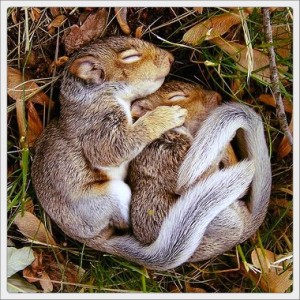 During the winter, much of the wildlife in the Adirondack Mountains seems to disappear. As most everyone knows, the main reason for the disappearing act is hibernation. But which animals usually hibernate? What happens to them during this period? And when do they “wake up”?
During the winter, much of the wildlife in the Adirondack Mountains seems to disappear. As most everyone knows, the main reason for the disappearing act is hibernation. But which animals usually hibernate? What happens to them during this period? And when do they “wake up”?
In our area, we are fortunate to have a vast array of animals living among us – from furry forest friends like squirrels and bear, to water animals like frogs and fish, to a number of different species of birds. Interestingly enough, many animals – both warm and cold-blooded – enter a period of hibernation during the winter months, although what actually happens to these animals varies greatly.
Who Hibernates?
You might be surprised to learn that the animal we most often associate with hibernation – the bear – is actually not a true hibernator! That’s because a bear’s metabolic rate and body temperature only reduce a small amount during the winter months, can go for extended periods without eating or drinking (up to 100 days!) and are easily awakened from their sleep. Therefore, many scientists refer to a bear’s denning period as winter lethargy or winter sleep, as opposed to hibernation.
On the other hand, there are several small rodents who actually do hibernate during the winter months. Those include bats, ground squirrels, some mice, woodchucks, opossums and badgers. Wetland creatures such as amphibians, reptiles and fish, as well as insects and some species of birds, also hibernate.
What Happens During Hibernation?
Hibernating mammals experience an extreme drop in body temperature, and it is difficult for them to awaken. Some must wake occasionally to eat, but there are some who stay in this period of stasis for up to six months. In the case of marsupials like the opossum, they give birth to their young while they are in hibernation, and the infants make their way to their mother’s pouch where they nurse during the hibernation period.
Wetland creatures such as frogs, toads and fish experience hibernation as well, although scientists refer it to as brumation. The slight difference in how these animals hibernate has to do with fat storage – mammals consume greater quantities of food in order to endure their hibernation period, while cold-blooded animals like reptiles typically survive on glycogen.
When Will They Wake Up?
Usually animals leave hibernation in the spring – when the weather warms up. If the spring starts early and is unseasonably warm, that’s probably a good thing for hibernating creatures… right? Actually, the opposite is true. That’s because a lot of the food sources these animals typically seek out, like certain types of grasses and berries, aren’t yet available, which can cause malnourishment or starvation. The best-case scenario is for spring to arrive on time, with ample opportunity for grasses to root and berries to bloom.
If you see an animal hibernating while out on an Adirondack adventure, it’s best to let sleeping creatures lie. Hibernation is a part of how the animal survives, and they do it because they need to! (Besides, think about how grumpy you are if someone wakes you up early!) Keep in mind that hibernating animals are in a deep state of sleep, so they might not appear to be living. Chances are, they are simply waiting for warmer days to “spring” back into action.
